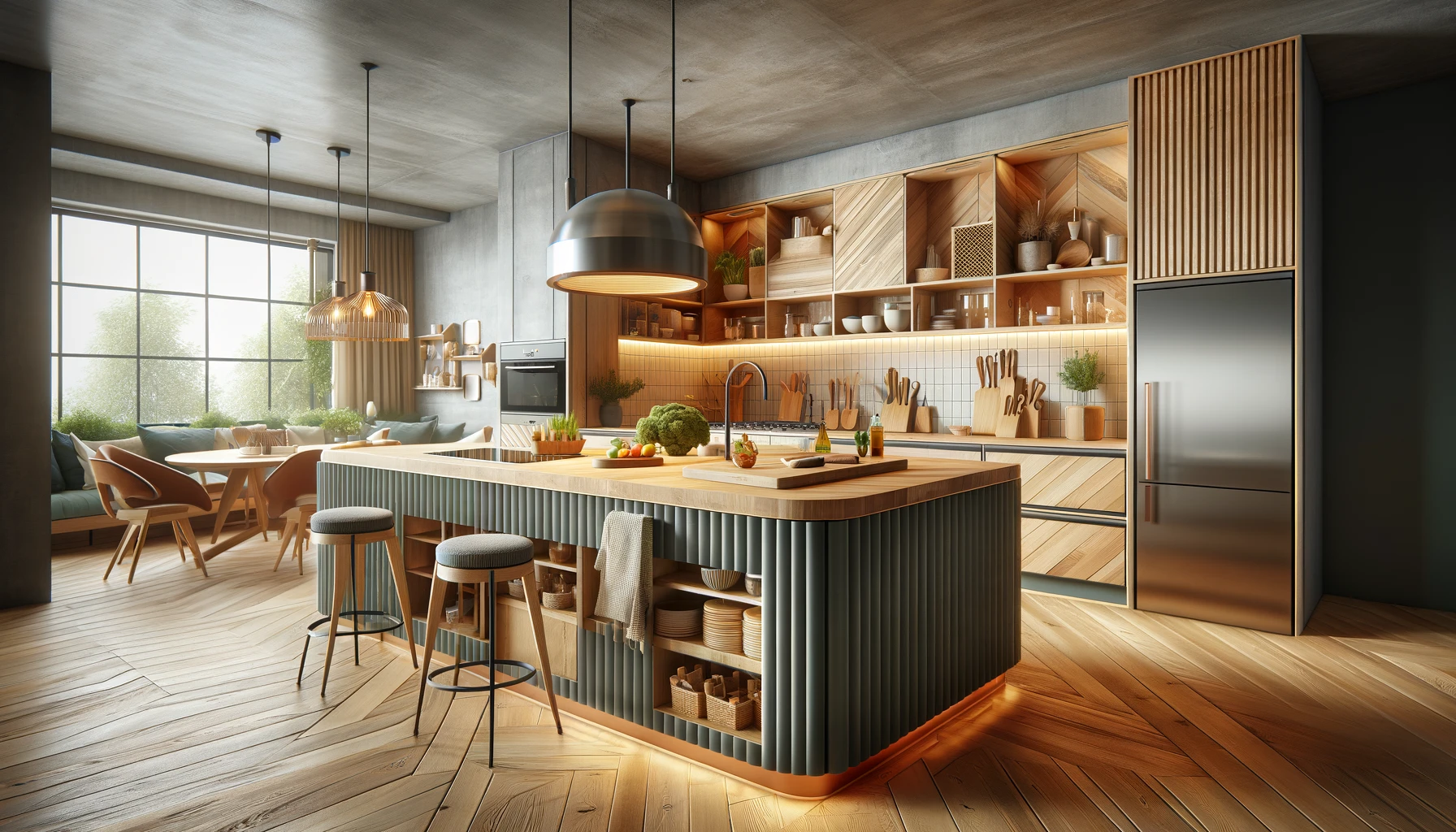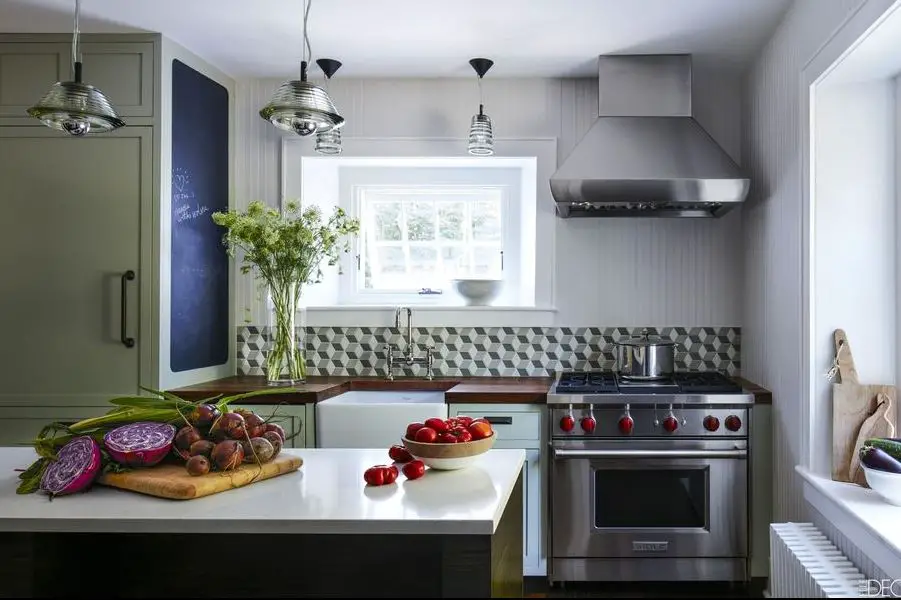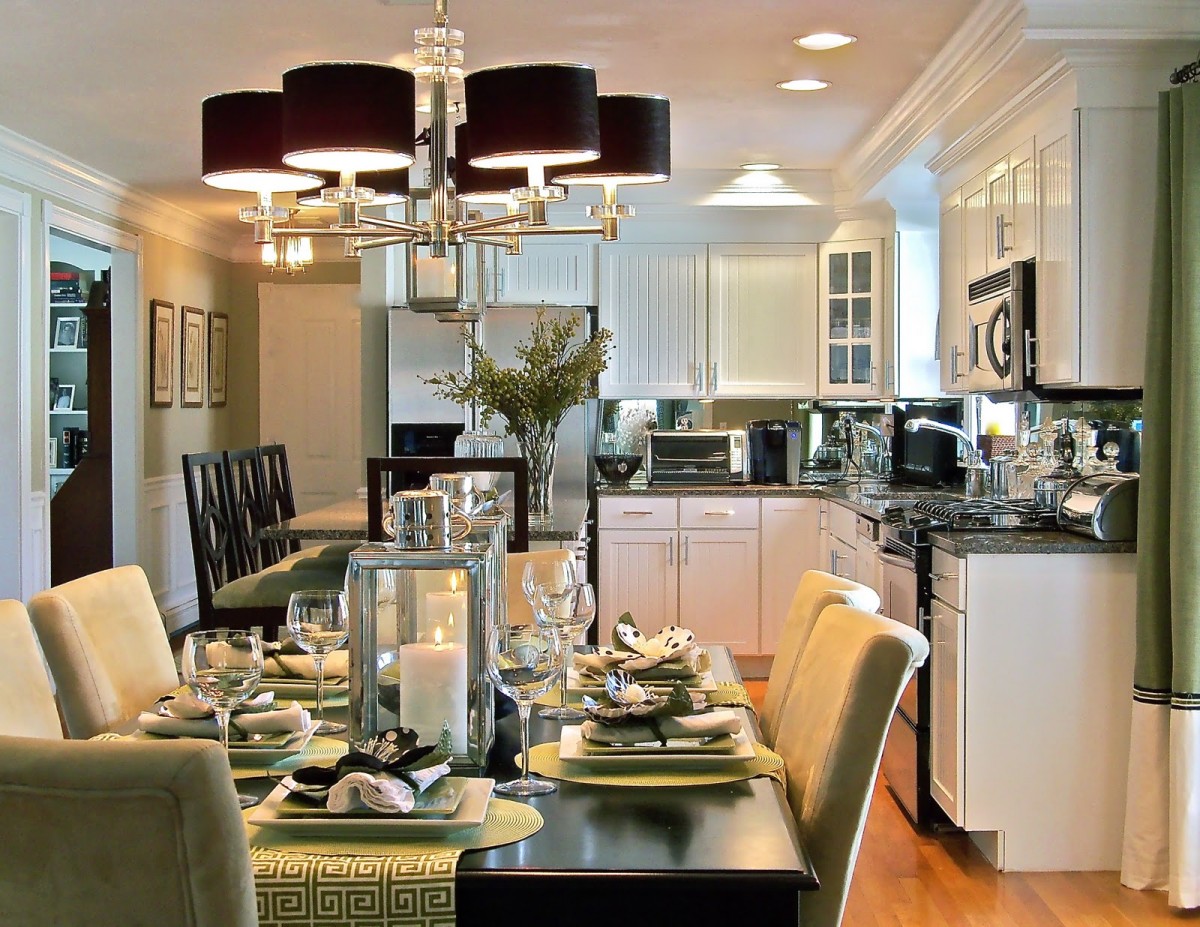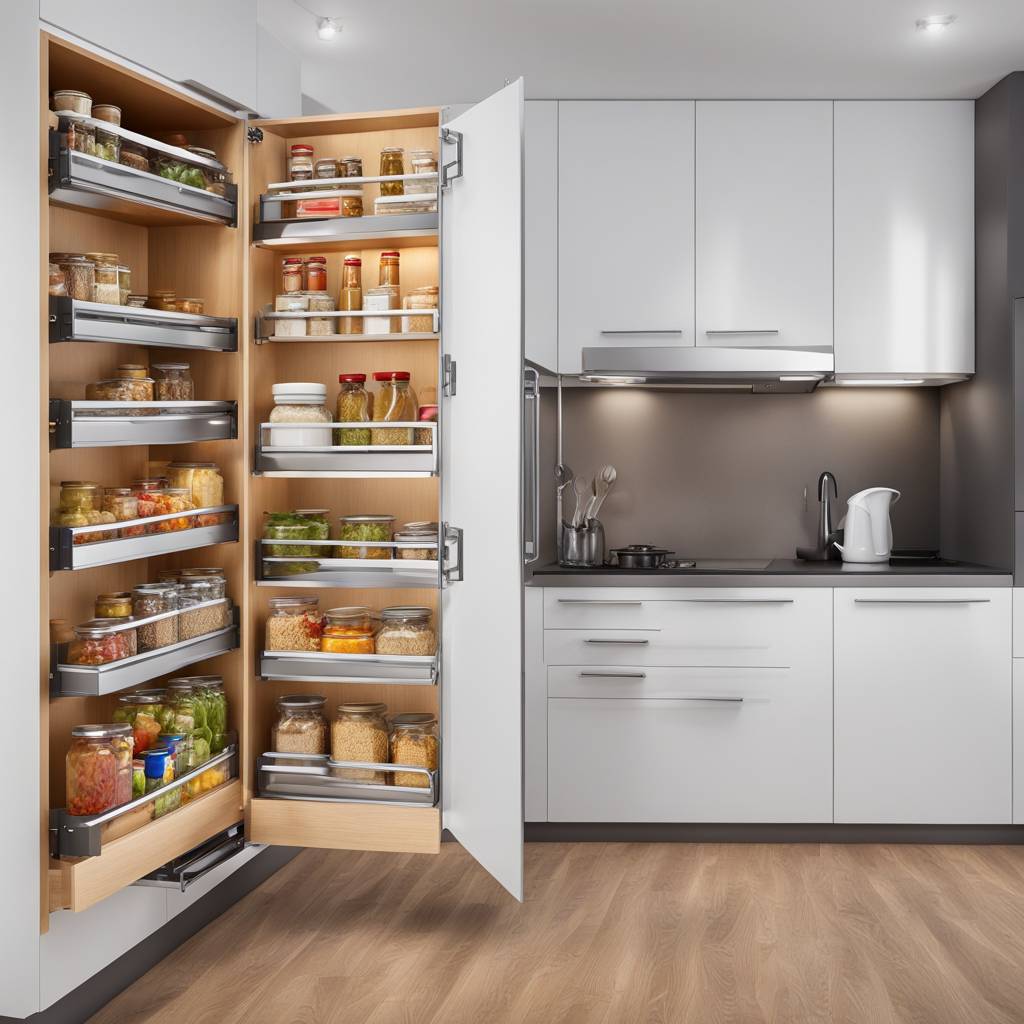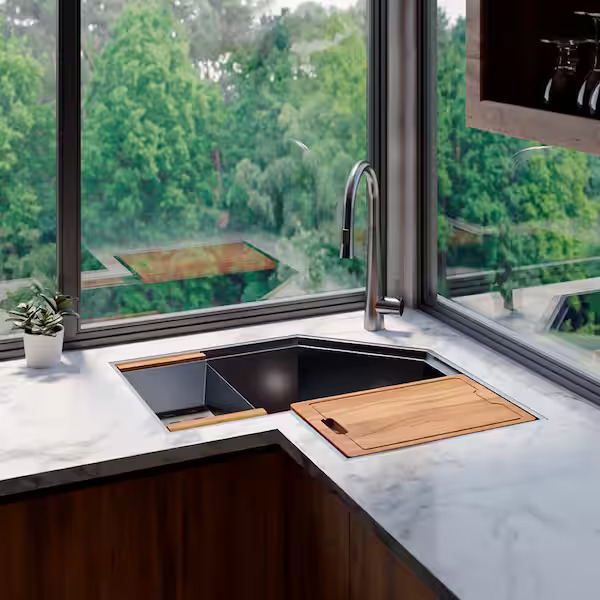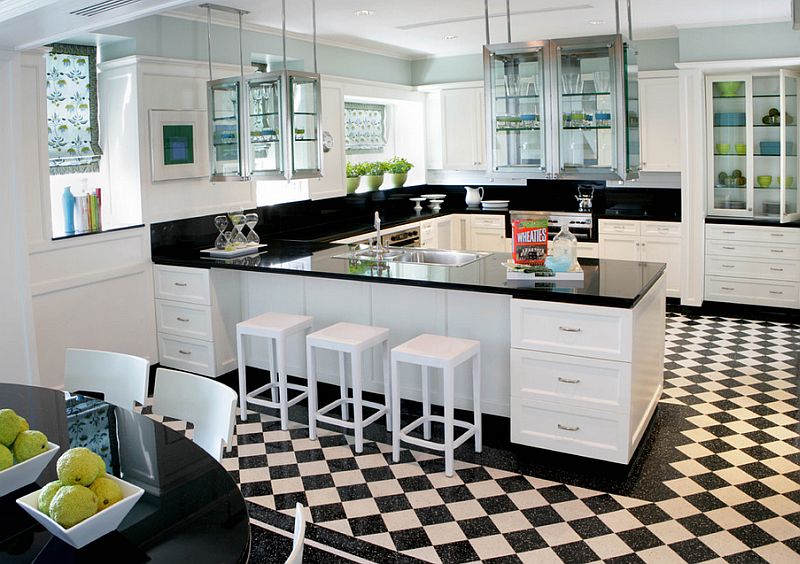Did you know that the average person spends about 37 minutes a day in the kitchen? That’s over 200 hours a year! With such a significant amount of time spent, it’s crucial to ensure that your kitchen is not only aesthetically pleasing but also maximizes efficiency. In this guide, we’ll delve into innovative design strategies and practical tips to transform your kitchen, including cooktop, fridge, and dimensions, into a streamlined workspace.
From optimizing storage solutions to creating designated prep zones and separate stations, we’ll explore how thoughtful design can revolutionize your cooking experience. Whether you’re an aspiring home chef or simply seeking ways to make daily tasks more manageable, these insights will help you unlock the full potential of your kitchen space. Get ready to discover how small changes can have a big impact on your culinary workflow.
Key Takeaways
- Strategic Design: Focus on strategic design elements such as appliance and sink placement, kitchen islands, and addressing individual needs to optimize kitchen workflow.
- Efficient Work Triangle: Implement the work triangle design to enhance flow and movement within the kitchen, ensuring a smooth and efficient cooking experience.
- Tailored Solutions: Tailor the kitchen design to individual needs, considering factors such as family size, cooking habits, and lifestyle to maximize efficiency.
- Commercial Insights for Home Use: Apply commercial kitchen insights to home kitchen design, incorporating professional workflow principles for improved functionality.
- Actionable Recommendations: Implement actionable steps such as decluttering, organizing, and optimizing storage to enhance the overall efficiency and functionality of the kitchen.
- Enhanced User Experience: By focusing on efficient design and workflow, homeowners can create a kitchen space that not only looks great but also enhances the overall cooking and dining experience for the family.
Optimizing Kitchen Workflow
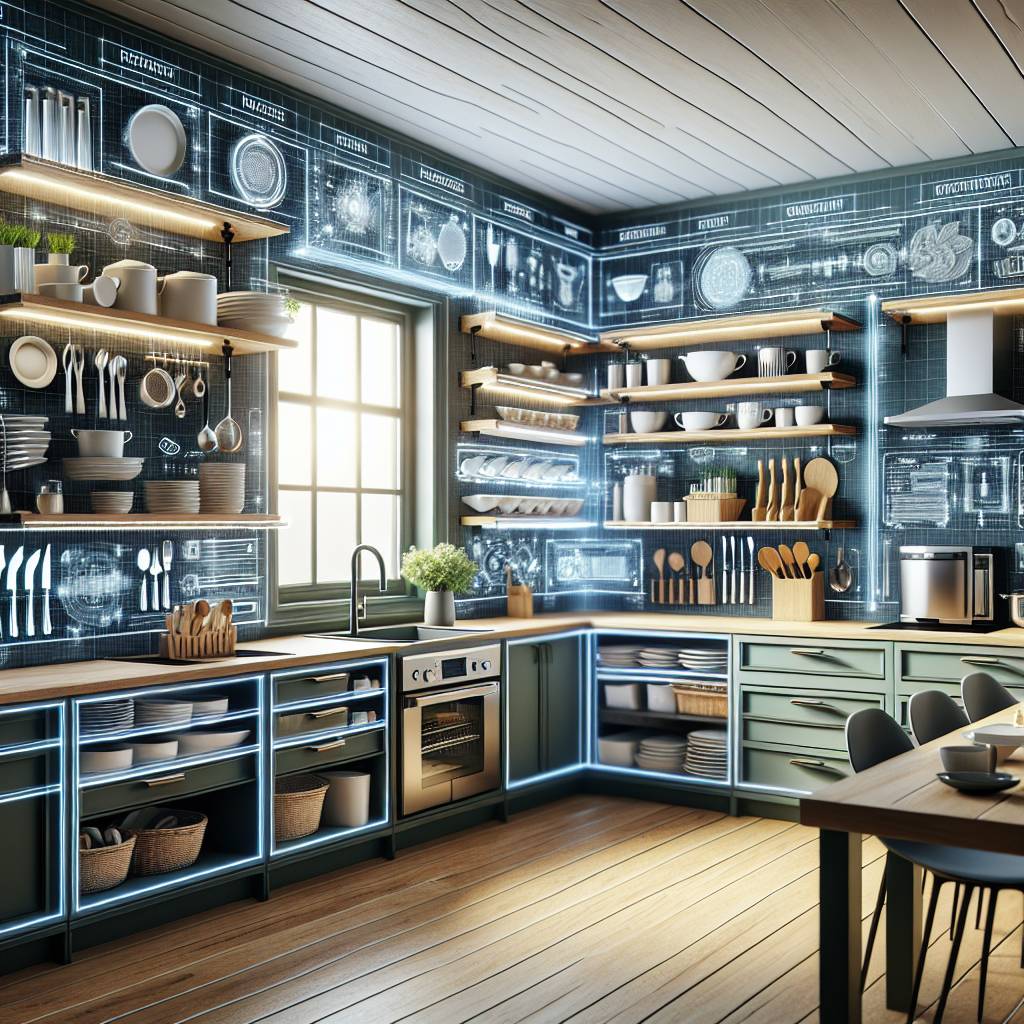
Strategic Placement
To maximize kitchen workflow with design, strategic placement of items is crucial. Placing frequently used items within arm’s reach can significantly improve efficiency. For instance, keeping spices, utensils, and cooking oils near the stove ensures easy access during meal preparation. Organizing kitchenware based on usage frequency allows for quick retrieval of essential tools.
Effective storage solutions play a pivotal role in optimizing kitchen workflow. Utilizing vertical storage options such as tall cabinets or shelves helps maximize space utilization. Pull-out drawers are also beneficial for efficient organization as they provide easy visibility and access to stored items. Moreover, installing overhead racks above countertops creates additional storage for less frequently used items without cluttering the workspace.
Organizing Items
Categorizing various kitchen items into designated storage areas enhances kitchen functionality by streamlining the cooking process. For example, grouping baking supplies together in one area and storing pots and pans close to the stove simplifies meal preparation tasks. Using clear containers for storing ingredients or leftovers enables quick identification of contents without rummaging through multiple containers.
Implementing drawer dividers is an effective method to keep small items organized within larger drawers or cabinets. This approach prevents clutter and makes it easier to find specific tools or accessories when needed during cooking activities.
Ensuring Safety
In addition to improving efficiency, it’s essential to consider safety aspects when designing a functional kitchen space. Securing heavy or sharp objects in lower cabinets prevents accidental injuries while accessing these items. Installing childproof locks on cabinets containing hazardous materials like cleaning products ensures a safe environment for families with young children.
Furthermore, maintaining clear walkways throughout the kitchen area is crucial in preventing tripping hazards that could disrupt kitchen workflow during meal preparation times.
Designing for Efficiency
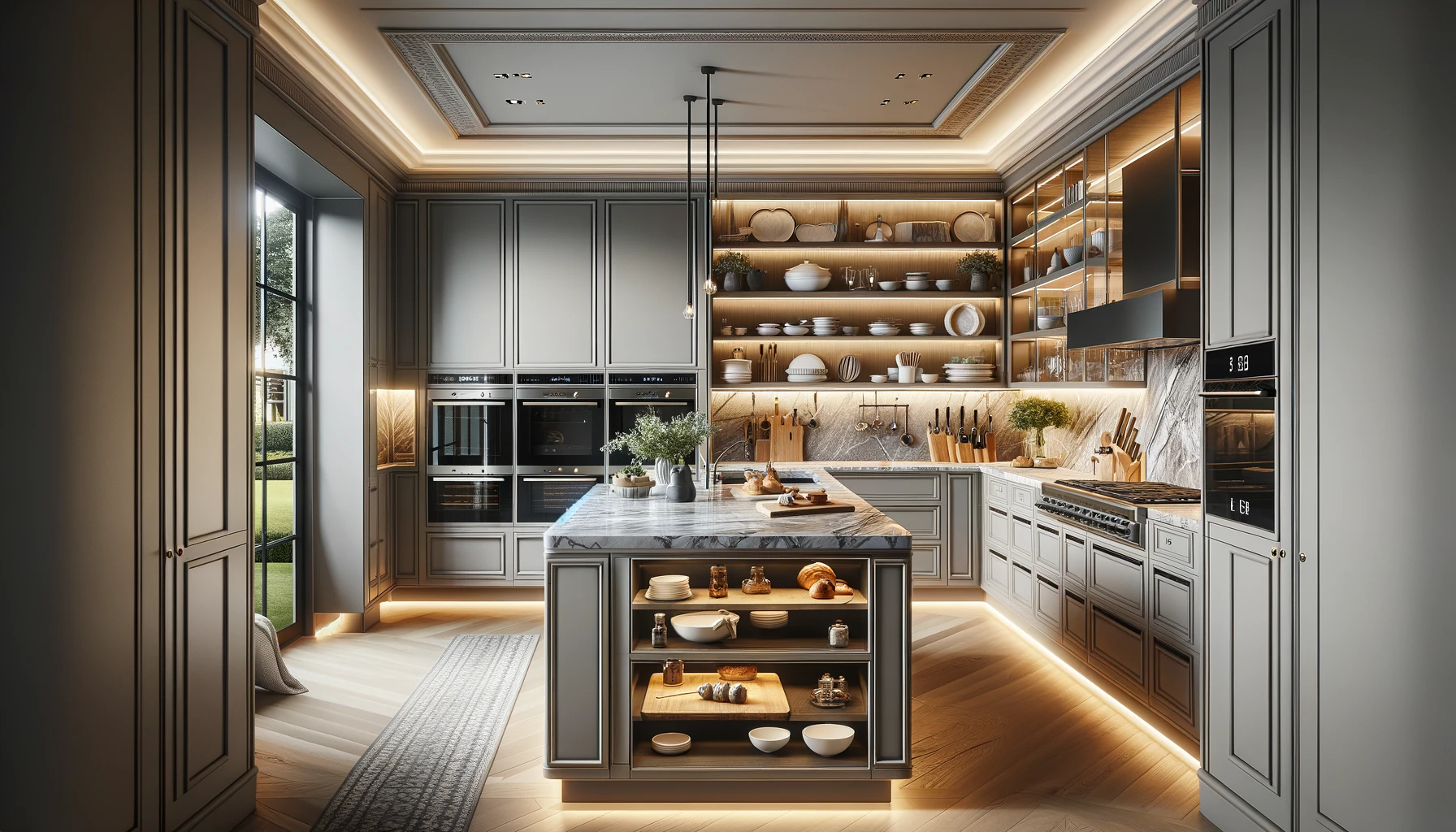
Customizing Workflow
It’s crucial to tailor the layout to fit individual cooking habits. By creating designated prep, cook, and clean-up zones, you can streamline the cooking process. For instance, if you frequently use certain utensils or ingredients while cooking, placing them within arm’s reach in your prep zone will minimize unnecessary movement.
Personalizing storage solutions based on specific needs is also essential. If you have a large collection of spices or baking tools, consider incorporating pull-out spice racks or deep drawers for bakeware storage. This customization ensures that everything has its place and is easily accessible when needed.
Streamlining Steps
Arranging kitchen elements in a logical sequence promotes efficiency. Placing the refrigerator near the food prep area reduces back-and-forth movements when retrieving ingredients. Similarly, positioning the dishwasher next to the sink facilitates seamless clean-up after meal preparation.
Minimizing unnecessary movements between work areas further enhances workflow efficiency. For example, situating cutting boards near the food prep zone eliminates extra steps during ingredient preparation.
Simplifying the flow from ingredient preparation to serving also plays a significant role in optimizing kitchen workflow with design. Ensuring that there is ample counter space near both the stove and oven makes it easier to transfer cooked dishes directly from these appliances onto serving platters without navigating through obstacles.
Maximizing Space
Making use of corner cabinets for additional storage capacity is an effective way to optimize kitchen space utilization. Lazy Susans or pull-out shelves installed in corner cabinets allow easy access to items stored at the back without having to rummage through cluttered spaces.
Utilizing wall-mounted shelves helps free up counter space by providing alternative storage options for cookware or decorative pieces such as plants or artwork.
Incorporating multi-functional furniture like an island with built-in storage not only adds extra workspace but also offers additional room for storing pots, pans, and other culinary essentials.
Embracing Simplicity
Adopting a minimalist approach contributes significantly towards maximizing kitchen workflow efficiency through design simplicity. Choosing sleek and uncomplicated storage solutions minimizes visual clutter while ensuring that necessary items are readily available whenever required. Focusing on essential items means decluttering unnecessary gadgets that may occupy valuable countertop real estate and cause eye strain due to excessive visual stimuli.
Enhancing Flow and Movement
Cabinet Setup
The cabinet setup plays a crucial role. Selecting cabinets with adjustable shelving is essential as it allows for accommodating various item sizes, from small spice jars to large mixing bowls. Incorporating deep drawers specifically designed for pots and pans storage can significantly enhance efficiency by providing easy access to these items. Installing pull-out pantry shelves ensures quick and convenient access to dry goods such as canned foods, pasta, and snacks.
For instance:
- Adjustable shelving in cabinets allows for storing tall bottles or bulky appliances.
- Deep drawers are perfect for organizing lids and larger cookware efficiently.
- Pull-out pantry shelves make it effortless to find specific items without rummaging through cluttered shelves.
Zone Organization
Creating distinct zones within the kitchen contributes greatly to improving workflow. Designating specific areas for food preparation, cooking, and cleaning streamlines the entire cooking process. Furthermore, allocating separate spaces for utensils, cookware, and pantry items helps maintain organization while minimizing time spent searching for necessary tools. Establishing a dedicated space for meal planning and recipe organization also adds value by centralizing all related activities in one location.
Consider this:
- Having a designated food prep zone with easy access to cutting boards and knives speeds up meal preparation.
- A separate area exclusively reserved for cookware near the stove facilitates efficient cooking operations.
- Creating a meal planning station equipped with recipe books or a tablet enhances organization during meal preparations.
Traffic Flow Management
Efficient traffic flow management within the kitchen is vital in ensuring smooth movement between key areas. Planning an unobstructed pathway between the refrigerator, sink, and stove promotes seamless transitions during cooking tasks. Moreover, strategically placing appliances like microwaves or dishwashers prevents congestion that may hinder movement around the kitchen space.
Here’s why it matters:
- An unobstructed path between major workstations reduces unnecessary steps when retrieving ingredients or moving cooked dishes.
- Placing frequently used appliances within arm’s reach of each other optimizes convenience during food preparation.
Addressing Design Challenges
Limited Space Solutions
Consider installing a sturdy rack suspended from the ceiling. This clever storage solution keeps pots and pans within easy reach while freeing up valuable cabinet or drawer space. By hanging these items, you can create more room for other kitchen essentials.
Utilizing fold-down tables or compact kitchen islands is an excellent way to optimize limited space. These versatile additions provide extra workspace when needed and can be easily folded away when not in use, maximizing efficiency without compromising on functionality.
Opting for slim-profile appliances helps conserve precious kitchen real estate without sacrificing performance. For instance, choosing a narrow refrigerator or a slim dishwasher can significantly impact the available floor area, making movement smoother and increasing overall accessibility.
Budget Constraints
Exploring cost-effective storage solutions such as open shelving allows you to display your favorite dishes and glassware while also optimizing storage capacity. Open shelves are relatively inexpensive compared to traditional cabinets but still offer ample space for organizing utensils, plates, bowls, and more.
Embarking on DIY organization projects using repurposed materials presents an opportunity to customize your kitchen’s design according to your needs without breaking the bank. From creating custom spice racks using old pallets to crafting unique wall-mounted organizers from mason jars, there are countless budget-friendly options available.
Prioritizing essential upgrades while working within a limited budget is crucial for achieving an efficient workflow in the kitchen. Focus on addressing key pain points such as enhancing lighting fixtures or replacing worn-out cabinet hardware before considering purely aesthetic enhancements.
Managing Clutter
Implementing a “one in, one out” rule for kitchen items helps maintain order by ensuring that new additions do not lead to unnecessary clutter accumulation. When acquiring new gadgets or utensils, consider donating or discarding similar items that are no longer in regular use.
Regularly decluttering unused or redundant utensils and gadgets prevents overcrowding in drawers and cabinets while streamlining access to frequently used tools. By periodically reassessing your inventory of cooking implements and eliminating duplicates or obsolete items, you can keep your culinary workspace organized efficiently.
Designating a specific area for incoming mail and paperwork within the kitchen creates a dedicated spot for managing these documents effectively without encroaching on food preparation areas.
Strategic Appliance and Sink Placement
Workflow Zones
Creating distinct workflow zones is crucial. By allocating separate spaces for meal prep, cooking, baking, and cleanup, you can ensure that each activity has its dedicated area. For instance, the meal prep zone should be equipped with a spacious countertop for chopping vegetables and mixing ingredients. Similarly, the cooking zone should house the stove or cooktop along with essential utensils within arm’s reach.
To guarantee seamless transitions between these zones, consider placing the refrigerator near both the prep and cooking areas. This way, accessing ingredients becomes effortless during various stages of food preparation. Customizing each zone with appropriate tools and storage solutions further enhances efficiency. For example, installing a pull-out spice rack near the cooking area streamlines access to seasonings while minimizing clutter in cabinets.
Cabinet Dimensions
Choosing cabinet sizes that align with your available kitchen space is pivotal in optimizing workflow efficiency. If you have limited space, opting for tall cabinets can help maximize vertical storage without encroaching on valuable floor space. Additionally,** customizing cabinet depth** based on the types of items being stored ensures that every inch of space is utilized effectively.
Considering custom cabinetry options to fit unique dimensions can also alleviate any spatial constraints posed by irregular layouts or architectural features like sloped ceilings or alcoves.
The Work Triangle Design
Understanding Significance
Efficient kitchen design impacts daily routines significantly. Well-planned storage enhances workflow by keeping essential items within easy reach. Thoughtful design contributes to overall productivity, making meal preparation and cooking more efficient.
Visualizing the ideal workflow within the kitchen space is crucial for maximizing efficiency. Consider sight lines and accessibility when arranging storage areas to ensure a smooth flow while working in the kitchen. Visualize the placement of key elements such as appliances and work surfaces to streamline tasks.
Visualizing Elements
Creating a visual plan helps in optimizing the kitchen layout for maximum workflow efficiency. By strategically placing appliances, sinks, and storage areas, you can minimize unnecessary movement and make multitasking easier. For instance, positioning the sink near both the refrigerator and stove creates an efficient work triangle that minimizes steps when preparing meals.
Considering sight lines ensures that important areas are easily visible from various points in the kitchen, reducing time spent searching for utensils or ingredients. Accessibility is also crucial; having commonly used items within arm’s reach makes cooking more convenient.
Utilizing for Functionality
Storage solutions should serve dual purposes to maximize their utility. For example, using pull-out drawers not only provides ample storage but also allows easy access to pots, pans, or canned goods without rummaging through cabinets.
Integrating functional design elements into the overall aesthetic ensures that practicality doesn’t compromise style. Choose cabinetry with built-in organizers or adjustable shelves to customize storage based on specific needs while maintaining a cohesive look in your kitchen.
Prioritizing practicality when selecting organizational tools can significantly impact workflow optimization. Drawer dividers keep utensils neatly organized and easily accessible during food preparation, saving time otherwise spent searching through cluttered drawers.
Incorporating Kitchen Islands
Incorporating an island into the kitchen work triangle concept can significantly enhance the overall kitchen workflow. The island serves as a central hub for food preparation and social interaction, bringing together various activities in one cohesive space. By strategically placing the island within the work triangle, it becomes an integral part of the cooking process while maintaining efficiency.
To maximize kitchen workflow with design, consider utilizing the island to improve storage capacity. By incorporating additional storage in the form of cabinets and drawers, essential items such as pots, pans, and small appliances can be conveniently stored within arm’s reach of the main workspace. This not only streamlines meal preparation but also reduces unnecessary movement around the kitchen.
Moreover, integrating specialized features within the island further enhances its functionality and contributes to optimizing workflow. For instance, including built-in cutting boards or utensil drawers directly into the island provides easy access to essential tools during food preparation. This minimizes time spent searching for items in different parts of the kitchen and ensures that everything needed is readily available at hand.
Creating a seamless flow between the main workspace and the island is crucial for maximizing kitchen workflow with design. When designing your kitchen layout, ensure that there is ample space between countertops and cooking areas to allow for smooth movement without congestion or obstacles. This promotes efficiency by enabling cooks to transition effortlessly between tasks without interruptions.
Tailoring to Individual Needs
Personalized Design Planning
Personalized design planning plays a crucial role. By tailoring the kitchen layout to accommodate individual preferences, homeowners can ensure that their cooking space is not only efficient but also reflects their unique lifestyle needs. For instance, considering specific cooking habits when designing storage solutions can lead to a more organized and functional kitchen.
Incorporating personal touches such as custom spice racks for avid cooks or designated areas for specialized appliances like stand mixers or juicers allows for a more personalized and efficient cooking experience. This tailored approach ensures that every item has its place, reducing clutter and streamlining the cooking process.
Flexible Layouts for Efficiency
Flexible layouts are another key aspect of maximizing kitchen workflow through design. Opting for modular or adjustable storage units enables homeowners to adapt their kitchen space to changing needs over time. For example, adjustable shelving and pull-out drawers provide versatility in storing various cookware and utensils while allowing easy access during meal preparation.
Moreover, creating versatile storage options that can be reconfigured as required facilitates efficient organization of items based on usage frequency or specific tasks. This flexibility in layout arrangements accommodates diverse culinary activities, from food prep and cooking to baking and entertaining guests.
Commercial Kitchen Insights for Home Use
Incorporating principles of commercial kitchen layout can significantly enhance efficiency. Professional-grade equipment and storage solutions play a crucial role in streamlining the cooking process. For instance, installing a spacious and durable countertop allows for efficient food preparation, while high-quality stoves enable precise temperature control during cooking.
Emphasizing functionality while maintaining a streamlined aesthetic is essential for an efficient kitchen design. This involves strategically placing appliances and workstations to create an ergonomic flow within the space. By optimizing the arrangement of key elements such as the stove, sink, and refrigerator, you can minimize unnecessary movement during meal preparation.
Incorporating restaurant-inspired organization methods into home kitchens can greatly improve overall workflow. Adhering to industry standards for safe and efficient food storage ensures that ingredients are easily accessible when needed. Properly organizing utensils, cookware, and ingredients not only enhances efficiency but also contributes to a visually appealing kitchen environment.
Closing Thoughts
You’ve now got the inside scoop on maximizing your kitchen workflow through smart design. By optimizing the layout, considering appliance placement, and customizing the space to your needs, you can create a kitchen that not only looks great but also functions like a dream. Remember, it’s all about finding that sweet spot between style and practicality. So, go ahead and put these insights into action to transform your kitchen into a hub of efficiency and comfort.
Ready to revamp your kitchen? Start by evaluating your current layout and pinpointing areas that could use improvement. Then, dive into the world of kitchen design with confidence, knowing that you have the knowledge to create a space that works for you. Your dream kitchen is within reach – it’s time to make it a reality!
Frequently Asked Questions
How can I optimize my kitchen workflow with design?
To optimize your kitchen workflow with design, consider the placement of appliances and sinks for efficient movement. Incorporating a well-planned work triangle and strategically placing a kitchen island can enhance flow and functionality.
What are some key design considerations for maximizing efficiency in the kitchen?
When designing for efficiency in the kitchen, it’s important to address potential challenges such as limited space or awkward layouts. Strategic appliance and sink placement, along with tailoring the design to individual needs, can greatly improve overall workflow.
How does incorporating a work triangle design benefit my kitchen workflow?
The work triangle design optimizes traffic flow between the stove, refrigerator, and sink – the three most commonly used areas in the kitchen. This layout minimizes unnecessary steps when preparing meals and enhances overall efficiency.
Are there specific insights from commercial kitchens that can be applied to home use?
Yes! Commercial kitchens offer valuable insights into optimizing space and workflow. Implementing similar strategies at home includes prioritizing functionality over aesthetics, ensuring easy access to frequently used items, and creating designated prep areas.
What role do kitchen islands play in enhancing overall workflow?
Kitchen islands serve as multifunctional spaces that provide additional storage, workspace, seating options, and centralized access to various parts of the kitchen. When strategically incorporated into your design plan, they can significantly streamline your cooking process.
